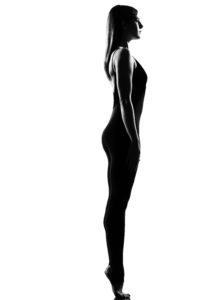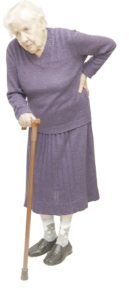Posture
The Perils of Poor Posture
Exercise professionals are committed to maintaining and improving the functional independence and physical performance of their clients. Most exercise professionals agree that good posture is essential for attaining these goals. It is often observed in the literature that a skeletal framework and/or spine that is misaligned may result in a cascade of bodily problems, most notably an impediment of the electrochemical messages of the nervous system (since the spine is the pathway for the nervous system to and from the brain) (Edmond et al. 2005).
Repositioning Poor Posture
Poor posture is prevalent in older adults. As we age, it is common for the head to move forward and the shoulders to round, which can cause chronic back and neck pain. Our once swift and sure stride is replaced with a sort of shuffle (Griegel-Morris et al. 1992). Sadly, this kyphotic posture (characterized by extreme convex curvature of the upper spine) can increase the risk of falling. Often, individuals who develop these physical characteristics must rely on a cane or walker to ambulate.
Posture Pointers
The quality of your posture can make a big difference in your life. Good posture can make you look and feel younger, stronger and more confident; and can help improve your breathing, advance your sports performance, decrease your risk of injury and improve your biomechanical efficiency. And, over the course of your life, good posture can prevent painful physical strain in your joints.
…
Feedback from the Field: head and neck alignment
In a previous issue of Inner IDEA Body-Mind-Spirit Review, we asked: When teaching your Pilates students proper head and cervical spine placement, what is the most common mistake and how do you help correct it? Here’s what you had to say.
Twist the day away with Gyrotonic
Sabrina Aspesi straddles a wood and metal exercise machine that resembles a reincarnation of a medieval torture rack – complete with pulleys, chains and weight plates. Her torso bends forward and back, arms and hands pushing and pulling two large knobs in fluid, sweeping, circular movements – as if stirring a giant vat of milk.This is the Gyrotonic workout, a regimen that some fitness-in…
- « Previous
- 1
- 2
- 3

